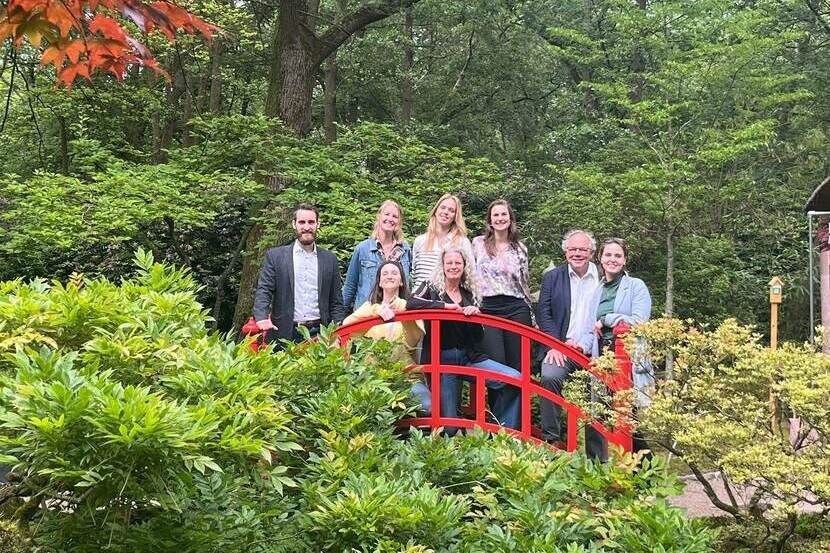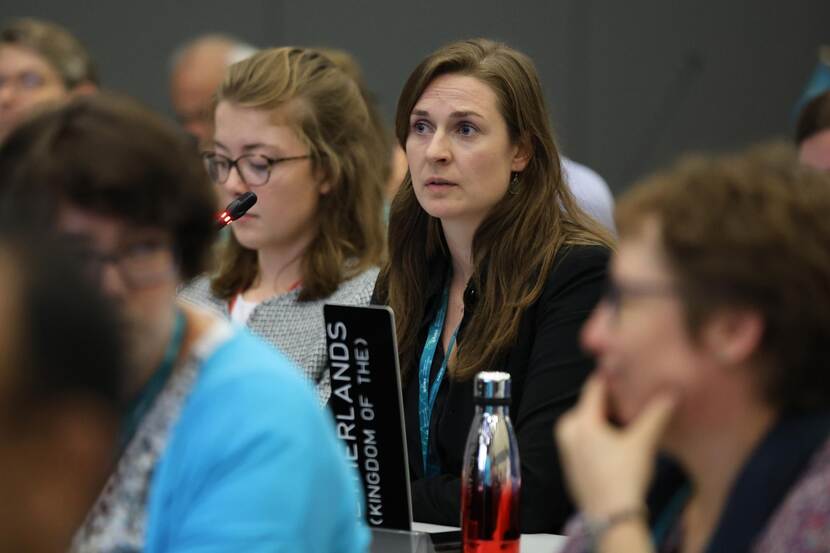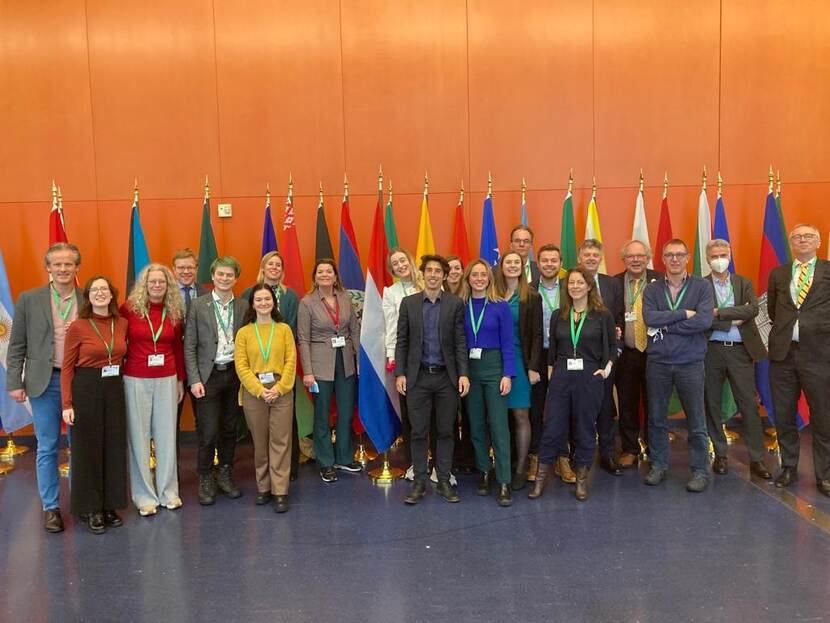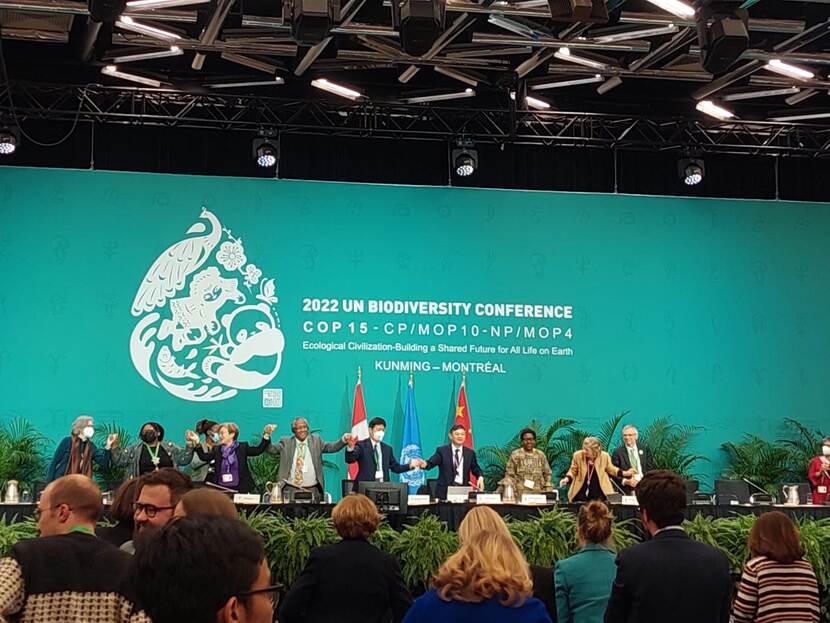Promoting global biodiversity: insights from the Netherlands
Biodiversity is essential for the health of our planet, and international cooperation is crucial for its conservation. In this context, the Convention on Biological Diversity (CBD) plays a pivotal role, setting global goals that guide nations in their efforts to protect and restore biodiversity. In the run-up to the Conference of the Parties 16 in Colombia, countries are busy drafting or updating their National Biodiversity Strategies and Action Plans. This article provides insights from Sanne Kruid, team coordinator at the Dutch Ministry of Agriculture, Fisheries, Food Security and Nature (LVVN) who oversees the Netherlands' involvement in the CBD and its related initiatives.

What is your job?
‘I am the team coordinator for the International Biodiversity team at the Ministry of Agriculture, Fisheries, Food Security and Nature (LVVN) in The Hague. This means I am responsible for the Netherlands' engagement with the UN Convention on Biological Diversity (CBD). Additionally, I serve as the focal point for the Intergovernmental Science-Policy Platform on Biodiversity and Ecosystem Services (IPBES). My team also provides support to the LVVN councils on biodiversity and nature-related themes.’

What are the CBD and IPBES?
‘The CBD was signed at the UN Earth Summit in Rio de Janeiro, Brazil, in 1992 and came into force in December 29, 1993. It is a global agreement that addresses all aspects of biological diversity: the conservation of biological diversity, the sustainable use of its components, and the just sharing of benefits arising from the use of genetic resources.’
‘The IPBES serves as an interface between the scientific community and policymakers, aiming to strengthen the use of science in policymaking. Established in April 2012, it is an independent intergovernmental body open to all UN member countries. IPBES provides an important and solid scientific basis on the state of biodiversity and ecosystem services, as well as policy options.’

What does the CBD entail?
‘The convention sets global biodiversity goals. Each country creates its own national plan, called the National Biodiversity Strategies and Action Plan (NBSAP), to fulfill the goals established by the CBD.’
‘Every two years, during the Conference of the Parties (COP) meetings, we come together to set goals, to evaluate progress and to discuss what tools and guidance are needed to implement the goals.’
‘In 2022, the COP 15 in Montreal established the Kunming-Montreal Global Biodiversity Framework, outlining objectives for 2030 with a vision toward 2050. This framework will guide national plans for implementation in the coming years, ultimately aiming for a harmonious coexistence with nature by 2050. For COP 16, taking place in October in Colombia, we must submit our NBSAP, and by February 2026, we need to report on our sixth national progress report regarding NBSAP implementation.’
‘At every upcoming COP an evaluation will be made to determine whether the sum of these national plans meets the goals and targets of the framework. If not, additional measures will be required, and those plans should be updated. The COP is the highest political decision-making body of the Convention.’

What does the Kunming-Montreal Global Biodiversity Framework require?
‘The framework includes 23 action targets that are quite broad. They encompass not only the "dark green" areas of protected nature but also the integration or mainstreaming of biodiversity into all sectors and all levels of government, reflecting a "whole of government" and "whole of society" approach.’
‘Additionally, there is a specific target aimed at businesses and financial institutions: mapping your impacts and dependencies on biodiversity, with the goal of transforming these into positive contributions or at least reducing negative impacts. There are also financing targets: target 18 addresses harmful environmental incentives, while target 19 focuses on mobilizing sufficient resources for biodiversity implementation.’
What efforts do the Netherlands and the Ministry of LVVN make in the field of biodiversity?
‘The state of biodiversity in the Netherlands requires serious improvement. This is not surprising given our high population density. Additionally, land is expensive and used for many different purposes.’
‘However, we are making progress, particularly in encouraging the private and financial sectors to integrate biodiversity into their operations. We do this partly through our Ministry, but many sectors are also proactively moving towards more nature-inclusive practices, supported by the Nature-inclusive Agenda. This agenda fosters nature-inclusive thinking and doing. Furthermore, our water management programs, such as the Room for the River initiative, have had a positive impact on biodiversity.’
‘As part of implementing the Kunming-Montreal Global Biodiversity Framework, we have mapped out which government subsidies are harmful to biodiversity. We did a preliminary analysis of this for our Ministry, which was shared with the House of Representatives. Calculation methods have been drawn up in cooperation with the Organisation for Economic Co-operation and Development, and these will be applied at several ministries.’

In which areas do you work together internationally?
‘The Netherlands Environmental Assessment Agency (PBL) does leading work for the UN biodiversity agreement. Among other things, in the field of analyses: where are we now and, if we continue down this path, what does that mean? The Ministry is supporting PBL financially to conduct a gap analysis which will identify whether the sum of the national plans will indeed result in meeting the Global Biodiversity Framework.’
You mentioned your team supports the Agricultural Counselors with biodiversity and nature issues. What does that support involve?
‘We noticed there was a need among the Agricultural Counselors of the Netherlands Agricultural Network (LAN) for more substantive knowledge and thematic support from colleagues at LVVN working on nature and biodiversity at the national level, as well as from those involved in international treaties. Conversely, it is essential for our national colleagues at LVVN to stay informed about developments in other countries related to their areas of focus.’
‘To foster knowledge sharing, we created a factsheet with some key areas that the Agricultural Counselors can work on, including the contact details of our national colleagues. Additionally, this year, we issued a project call, and currently, we are financing 11 projects of Agricultural Counselors, totaling approximately €261,000. As an example, one project in Ivory Coast aims to support in developing its national biodiversity plan derived from the UN Biodiversity Convention. This beautifully bridges the multilateral and bilateral realms. We are also supporting a project focused on the biodiversity in wetland areas in Mexico.’

What are your plans for the foreseeable future?
‘Nationally, colleagues will focus on the Dutch national biodiversity restoration plan, which is a requirement of the European Nature Restoration Law and must be developed by 2026. The goal is to ensure that at least 20% of land and marine areas in the EU are restored, increasing to 80-90% by 2050.’
‘We are making progress, particularly in encouraging the private and financial sectors to integrate biodiversity into their operations.’
That's a significant effort!
‘Indeed, it is a substantial undertaking, which we cannot carry out on our own. Therefore, we will collaborate with regional and local governments, which play a crucial role in environmental management in the Netherlands. The responsibility for nature policy primarily lies with the provinces, while the Ministry of LVVN can guide but not prescribe extensively. Consequently, provinces and municipalities are closely involved in drafting new legislation, as well as in the EU processes, and the Netherlands' position within them. Ultimately, it is the provinces that implement these measures, while the Ministry takes on a more supervisory, supportive, and facilitative role.’

Why should the Netherlands engage with biodiversity issues abroad?
‘Firstly, because biodiversity knows no boundaries. Secondly, we have a significant ecological footprint abroad due to our production, consumption, and trade patterns. Furthermore, it may sound counterintuitive, but especially in areas like nitrogen emissions, where the Netherlands struggles, there is a lot of knowledge and expertise to share with other countries. The Netherlands Environmental Assessment Agency and Wageningen University & Research have important contributions to make. De Nederlandsche Bank is at the forefront when it comes to mapping impacts and dependencies on biodiversity. Our experiences give us valuable insights into what works and what doesn’t.’
‘At the same time, as a developed country, we bear the responsibility—especially given our substantial historical footprint—to help other nations develop more sustainably than we did. Moreover, we can learn from other countries, particularly in areas like salinization, where Mediterranean nations have far more experience than we do.’
‘Additionally, we excel in water management and nature-based solutions, yet we lack expertise in non-water-related nature-based solutions. The Netherlands Agricultural Network can play a vital role in this context. I am very pleased with the enthusiasm of the network and see significant potential in connecting agricultural and nature agendas.’
‘Bending the curve on biodiversity loss is not an option, it is a must! Only together, collectively, with all governments and all of society, nationally and internationally, can we do it.’
This article is part of the 13th edition of the e-magazine Agrospecial, titled "Peace with Nature: Global Biodiversity Commitment" (originally published on October 9, 2024).
In this edition, the Netherlands Agricultural Network (LAN) explores the crucial role of biodiversity in agriculture and nature in the context of the COP16 of the Convention on Biological Diversity (CBD) in Colombia. Agricultural Counselors from over 18 countries share their involvement in initiatives that foster the protection and sustainable use of biodiversity, highlighting the complex interdependence between biodiversity, water and soil management. In these efforts, cooperation, innovation and knowledge exchange are key, and LAN plays a crucial role in mainstreaming this global commitment.